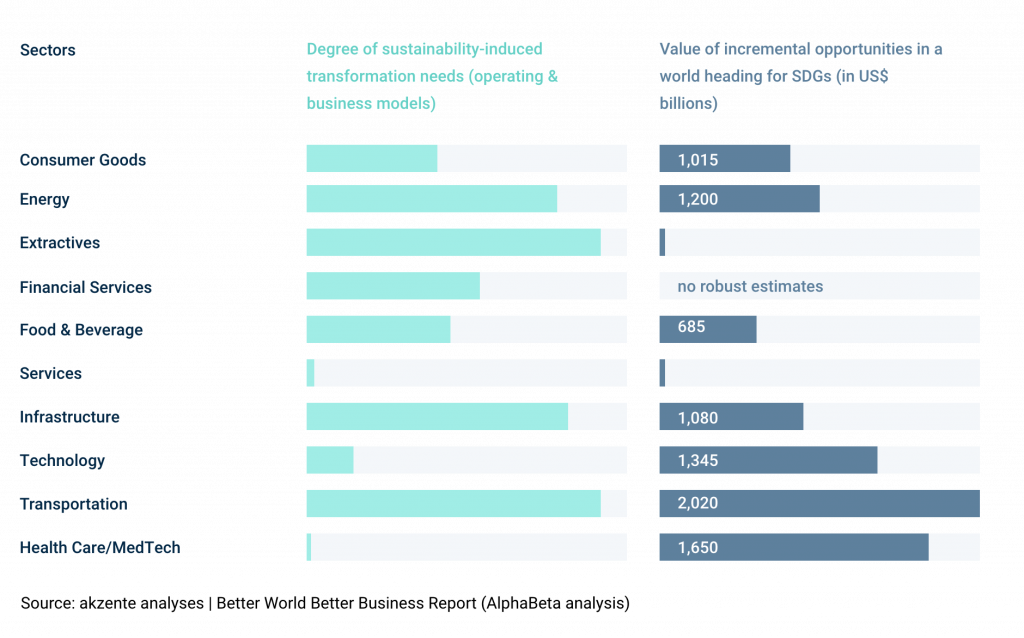Chapter 04
Stretch! How to become a force for good.
The equation “doing well by doing good” has never added up better than today. The Sustainable Development Goals offer compelling growth opportunities for startups, for businesses generally, and for the global economy. Achieving the SDGs is said to open up US $12 trillion of market opportunities. But how can you find where this very potential lies for your own startup? Well, we’re here to help!
After this chapter, you…
- know what your key business opportunities are in the context of sustainability.
1. Look for opportunities resulting from sustainability-induced transformation
Sustainability is all about transformation processes. Like the energy industry is transforming from fossil to renewable, mobility from conventional combustion engines to electric drives, diets from meat-based to alternative proteins, or packaging from plastics to bio-based materials. These transformations are happening now, and they are happening fast.
If you are about to start your own business, watch out for transformations happening within your ecosystem or at its interfaces with neighboring systems and ask yourself how you could become a part of it. If you have already started your business ask yourself how you might benefit from these transformations!
Transformational needs and SDG-related business opportunities in different sectors

2. How are your stakeholders affected by sustainability?
Go back to your map and the stakeholders that you’ve situated along your value chain. How are they affected by sustainability requirements and transformations? How could you help your clients find solutions to their very own sustainability challenge? Could you actually transform stakeholders into customers, partners, or allies? Doing this will help you to understand the sustainability trends in the industry you are operating in.
If you are a B2B business:
- check out some of the sustainability reports of your biggest clients,
- have a look at their materiality analyses, and
- cross-read the depiction of their sustainability strategies.
They will provide you enough leads to work with. If you provide products and services to consumers, then watch out for recent studies on the striking effects of sustainability on consumption behavior and consumer preferences.
3. Watch out for inefficiencies and conflicting goals
Ask yourself which inefficiencies are characteristic for your ecosystem:
- Is there any big-scale waste of resources going on?
- Are there material flows that result in the disposal of resources, or is there a risk of materials becoming scarce or illegal to use?
- Would it be thinkable to replace physical products with smart services?
Such inefficiencies, just like conflicting sustainability goals (e.g. zero emissions from building vs. affordable housing, intended increase of battery electrical vehicles vs. supply chains free of conflict minerals) bear tremendous opportunities.
Is it that easy?
Well, yes. And no. Yes, because the number of business opportunities associated with sustainability is literally growing by the hour. That’s not necessarily a good thing, but also a sign of tightening symptoms of our environmental and social crises. And no, because the opportunities do not grow on trees. Particularly not on trees in your own garden.
You will need to take some time to brainstorm, research, and discuss potential business opportunities. So do that, collaboratively with your management team, other startups, in exchange with your NGO friends, and read the newspapers!
If you need some further inspiration, you will find a lot of case studies and examples for SDG-related business opportunities in chapter 9.

